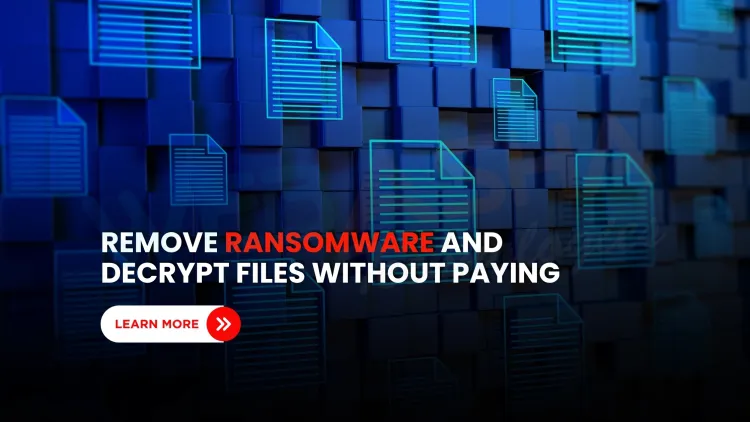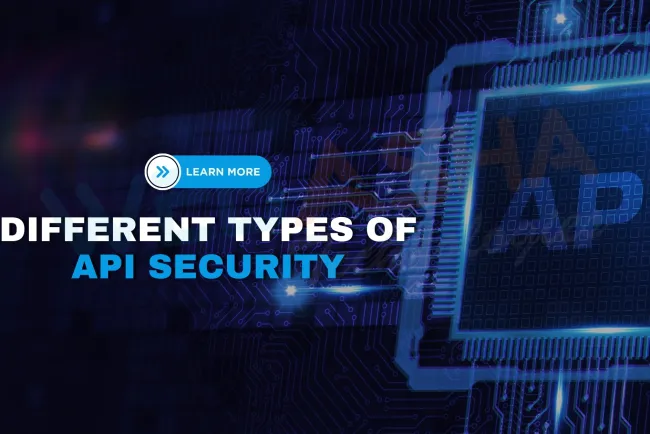How to Remove Ransomware and Decrypt Files Without Paying the Ransom in 2025
Learn step-by-step how to remove ransomware and decrypt your files without paying a ransom. Explore real-world tools, best practices, and prevention strategies in this updated 2025 guide.

Table of Contents
- What Is Ransomware?
- Common Types of Ransomware in 2025
- How to Know If You’re Infected
- What to Do Immediately After a Ransomware Attack
- Decrypting Files Without Paying the Ransom
- Should You Pay the Ransom?
- How to Prevent Future Ransomware Attacks
- Best Anti-Ransomware Tools in 2025
- Case Study: STOP/Djvu Ransomware
- Conclusion
- Frequently Asked Questions (FAQs)
Ransomware attacks are still one of the most dangerous and fast-spreading cyber threats in 2025. These attacks lock your files or systems until a ransom is paid—often in cryptocurrency like Bitcoin. Whether you're an individual, small business, or enterprise, knowing how to remove ransomware and recover encrypted data safely is crucial.
In this blog, we’ll explore how ransomware works, steps to remove it, legal and ethical considerations, and ways to decrypt your files without paying the ransom.
What Is Ransomware?
Ransomware is a type of malware that locks or encrypts your data and demands a ransom payment to unlock it. Once inside your system, it can:
-
Encrypt documents, photos, databases, and more
-
Lock your screen or block access to applications
-
Demand payment in exchange for a decryption key
In many cases, attackers threaten to leak sensitive data if the ransom isn’t paid—a tactic known as double extortion.
Common Types of Ransomware in 2025
| Ransomware Type | Behavior | Recovery Difficulty |
|---|---|---|
| LockBit 3.0 | Encrypts files, threatens data leaks | High |
| BlackCat/ALPHV | Targets enterprises with multi-platform payloads | Very High |
| Clop | Known for exploiting zero-day vulnerabilities | High |
| Phobos | Common in SME and healthcare sector attacks | Medium |
| STOP/Djvu | Often bundled with pirated software | Low–Medium |
How to Know If You’re Infected
Signs of a ransomware infection include:
-
Sudden inability to open files
-
A ransom note on your desktop or in folders
-
File extensions changed (e.g.,
.locked,.crypt) -
System slowdown or crashes
-
Strange network traffic or pop-ups
What to Do Immediately After a Ransomware Attack
Do NOT pay the ransom unless there’s absolutely no other option. Paying does not guarantee your data will be returned, and it encourages future attacks.
Step-by-Step Actions:
-
Disconnect from the Network
-
Unplug Ethernet cables and turn off Wi-Fi
-
Prevents the ransomware from spreading
-
-
Identify the Ransomware
-
Check ransom note
-
Use sites like ID Ransomware to identify the strain
-
-
Use Antivirus or Anti-Malware Tools
-
Run tools like Malwarebytes, ESET, or Windows Defender in Safe Mode
-
-
Check for Decryption Tools
-
Visit No More Ransom for free decryptors
-
-
Restore from Backups
-
If backups are clean and up-to-date, restore them after full system cleanup
-
-
Rebuild or Reimage
-
In worst-case scenarios, reinstall the OS to ensure complete removal
-
Decrypting Files Without Paying the Ransom
There’s a growing library of free decryption tools available for certain ransomware types.
Reliable Decryption Sources:
-
No More Ransom (non-profit portal with tools from cybersecurity firms)
-
Avast, Emsisoft, Kaspersky (offer free decryptors for specific variants)
-
Bitdefender (frequently releases tools for high-profile ransomware)
If the ransomware is newly evolved (e.g., LockBit 3.0 or BlackCat), decryption may not be available yet.
Should You Pay the Ransom?
No, unless it’s a life-or-death situation (like in hospitals) and there's no other way to recover the data. Risks include:
-
No guarantee you’ll get the decryption key
-
The decryptor may fail or be buggy
-
You become a repeat target
-
Legal issues depending on your country's policies
How to Prevent Future Ransomware Attacks
Prevention is always better than cure. Here's how to reduce the chances of future infections:
-
Keep systems updated (OS, antivirus, applications)
-
Enable strong email filtering
-
Use endpoint protection tools
-
Restrict admin privileges
-
Segment your network
-
Backup data regularly (offline and cloud)
-
Conduct employee awareness training
Best Anti-Ransomware Tools in 2025
| Tool | Purpose | Free Version? |
|---|---|---|
| Malwarebytes Anti-Ransomware | Real-time ransomware defense | ✅ |
| Bitdefender GravityZone | Enterprise-grade protection | ❌ |
| Sophos Intercept X | Behavioral AI ransomware protection | ❌ |
| Kaspersky RakhniDecryptor | Decryption tool for various ransomware | ✅ |
| Windows Security (Defender) | Built-in, surprisingly effective in 2025 | ✅ |
Case Study: STOP/Djvu Ransomware
This ransomware spreads via cracked software and browser exploits. It encrypts common file types and appends extensions like .djvu.
-
Impact: Widely seen in Asia and Eastern Europe
-
Decryptable?: Yes, if files weren’t encrypted with online keys
-
Tool: Emsisoft STOP/Djvu Decryptor
Conclusion
Ransomware is getting smarter and faster—but so are the tools and communities fighting back. By acting quickly, using trusted decryption tools, and maintaining strong backups and security hygiene, you can recover from most attacks without giving in to the demands.
FAQs
What is ransomware and how does it work?
Ransomware is malicious software that encrypts a victim’s files and demands a ransom to restore access. It spreads through phishing emails, infected websites, or network vulnerabilities.
How can I tell if my computer has ransomware?
You may see locked files, a ransom note, slow performance, or file extensions like .locked or .crypt added to your files.
What should I do immediately after a ransomware attack?
Disconnect your device from the internet, do not pay the ransom, identify the ransomware, and begin the cleanup using anti-malware tools.
Can ransomware be removed without paying?
Yes, many ransomware strains can be removed using security tools, and some have free decryptors available.
Where can I find free ransomware decryption tools?
Visit NoMoreRansom.org or security vendors like Emsisoft, Kaspersky, or Avast for decryptors.
How do I identify the ransomware variant?
Upload the ransom note or sample encrypted file to ID Ransomware or similar online services.
Is it legal to pay ransomware demands?
While not illegal in many countries, paying ransomware may be discouraged and can be risky if the attacker is sanctioned.
Can I recover ransomware-encrypted files without a decryptor?
Yes, if you have clean backups or use file recovery tools that restore shadow copies (if not deleted by the ransomware).
Do antivirus programs detect ransomware?
Modern antivirus and endpoint detection tools often catch ransomware early through behavior-based detection.
What is the No More Ransom project?
It’s a global initiative that provides free decryption tools and ransomware information from cybersecurity companies and law enforcement.
What is double extortion ransomware?
This tactic involves both encrypting data and threatening to leak it if the ransom isn't paid.
How do backups help in ransomware recovery?
If your backups are offline and uninfected, you can restore your data after removing the malware.
Can system restore undo ransomware damage?
Usually no, because many ransomware strains disable or delete restore points.
What is the STOP/Djvu ransomware?
It’s a common ransomware strain that spreads through cracked software and browser exploits. Some versions are decryptable.
How does ransomware spread on a network?
Through shared drives, unsecured remote desktop protocol (RDP) access, phishing, and lateral movement via vulnerabilities.
What is the safest way to remove ransomware?
Boot into Safe Mode, run antivirus or ransomware removal tools, and clean the system before restoring files.
Can files be decrypted after formatting the system?
Only if you have a backup of the encrypted files and a working decryption key or tool.
What is a ransomware decryptor?
It’s a tool that reverses the encryption process and restores locked files without paying the ransom.
Is Windows Defender effective against ransomware in 2025?
Yes, its ransomware protection has improved significantly and includes folder access control and behavioral analysis.
How can I prevent ransomware in the future?
Keep systems updated, use antivirus, avoid suspicious links, train staff, and regularly back up data offline.
What if I don’t have backups of encrypted files?
You can try available decryptors or consult a cybersecurity professional, but recovery may be limited.
Can ransomware be manually removed from the registry or processes?
This is risky and not recommended unless you're highly skilled. Use trusted tools instead.
What are some good anti-ransomware tools?
Malwarebytes Anti-Ransomware, Bitdefender, Sophos Intercept X, and Kaspersky are leading tools in 2025.
Can cloud backups get infected with ransomware?
Yes, if they're not versioned or protected with time-delayed syncing. Use immutable backups when possible.
What is encryption key storage in ransomware?
Ransomware often generates a unique key per victim. If this is stored online (not locally), decryption is harder.
Are ransomware decryptors safe to use?
Yes, if downloaded from trusted sources like No More Ransom or reputable antivirus vendors.
Can I recover files using file recovery tools?
Sometimes, especially if the ransomware didn’t overwrite data or delete shadow copies.
Why do some decryptors not work for me?
It may be because your encryption key was generated online and is unique to your system.
How long does it take to decrypt ransomware files?
It depends on the ransomware strain, the number of files, and the tool’s efficiency—it can take minutes to hours.
Is it ever okay to negotiate with ransomware attackers?
Only as a last resort, and ideally through a legal, experienced incident response firm or law enforcement liaison.














![Top 10 Ethical Hackers in the World [2025]](https://www.webasha.com/blog/uploads/images/202408/image_100x75_66c2f983c207b.webp)








